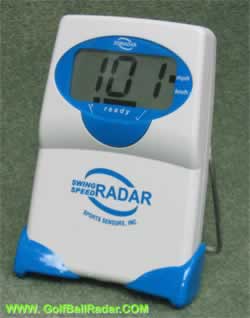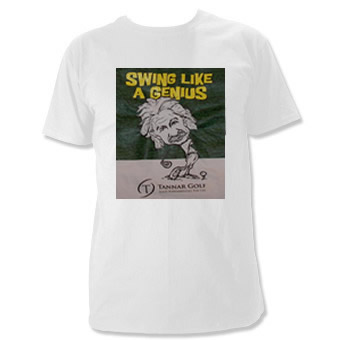
|
|
Is the Handicap System Fair?Net Scores
The mean, standard deviation and spread of each handicap
group are listed in the table above. Note that the 0 to 4 has
the highest low score but the lowest high score, thus a small
spread. Low handicappers are more consistent day to day . . .
. . 2 Man Best Ball What about a 2 Man Best Ball Event? What combination of players
would most likely produce the lowest score? I again used a spreadsheet
to simulate pairings and their Net Best Ball Scores. Each player
was paired with every other player resulting in over 140 000
scores. Players received strokes on holes according to the handicap
difficulty of the hole (USGA Hole Allocation) . . . . .
. . Match Play What about match play? Does one handicap group have an advantage
over the other? The table below shows an example of a simulated match between a 3 handicapper and a 23 handicapper. Note that their net scores, 74 and 73 respectively, are about the same. The official handicap ranking of the holes are in bold red. Gross scores are in black. Net scores on each hole used to determine a Win or Loss (W/L) are in red. The 3 handicap gets strokes on handicap ranked holes numbers 1, 2 and 3 (which correspond to hole numbers 4, 11 and 1, respectively. The 23 handicap gets 1 stroke on every hole except handicap ranked holes numbers 1 thru 5 (hole numbers 4, 11, 3, 16 and 9, respectively) where he gets 2 strokes.
Note that on the front nine, the 3 handicap loses 1 down. On the back nine, the 3 wins 1 up so the match ends in a tie even though the net scores differ by one (3 handicap, 74, and 23 handicap, 73). The 3 handicap won the two most difficult holes (#4 and #11) even though the 23 handicap got 2 strokes on each of those holes. Below is a table summarizing the results of the analysis of over 140 000 matches .....
The USGA has a system in place that determines the difficulty ranking of the holes. Every hole on an 18 hole course is ranked by difficulty and given a handicap rating of 1 thru 18, the handicap 1 hole being the most difficult hole and handicap 18 being the easiest hole. The system used by the USGA to rank the holes depends on the length of the holes as well as various difficulties on the holes (sand, water, elevation changes, etc). If you’re interested in the process that they use, go to: USGA Handicap Manual At this Golf Course, the holes’ handicaps (difficult
ranking) are at the top of the above table in bold
red. Hole
number 1, measuring 405 yards is ranked as Handicap 3, the third
hardest hole. For a 0-4 handicapper, the official hole rankings, Hcp, closely match the actual difficulty rankings. The average Distance/Stroke average is 79 yards/stroke. To predict the average score on any hole, dividing the hole length by 79 would predict quite well. For example, for Hole #15, 347 / 79 =4.4 which is the actual average; for Hole #11, 397 / 79 = 5.0, while the actual average is 4.6. Note that for different handicap groups, the difficulty rankings of the holes are . . . . . . . . . I've developed a calculator that will determine the real difficulty ranking of a golf course's holes. The ranking is different for each handicap group. Download the calculator immediately and/or find out more. Click here.
Birdie Frequency and Those “Other” Scores
Many golfers when playing “friendly matches” play more than a stroke play or match play game. They also play for birdies, sandies, chip ins, 3 putts, etc. If the handicaps of the players are similar, then playing these games “straight up” is fair. But what about a low handicapper playing a high handicapper. The low handicapper is going to make more birdies and less 3 putts. In a birdie game, for instance, would it be fairer to play net birdies. Most low handicappers would argue that this would favour the high handicapper. What’s the fair way to play a birdie game? Of the over 1600 scores, I analyzed the number of birdies,
pars, bogies, etc., to answer the question of fairness. They
are summarized in the table below.
Low handicaps make more gross eagles and birdies than other handicaps. Other handicaps are reluctant to play “gross birdie” games with low handicappers as the lows are reluctant to play “net birdie” games. The number of birdies for each group has been quantified and therefore equitable birdie games have been identified. You can immediately download the individual reports or the entire report.
All 3 Reports: Get All of the Golf Analyses - Master Golf
©Probable Golf Instruction, Ken Tannar 2001-2015. All Rights Reserved. Langley, B.C. V2Y 2G4 CanadaPhone: 604-309-7030 FAX: to fax, email an attachment probablegolf@yahoo.ca or golfexpert@probablegolfinstruction.com |
| GOLF ASSISTANTS |
|
Golf Trip Pairing CalculatorPlanning a golf trip with some friends/family? Trying to sort out the foursomes so people don't play too often with others? Order your ready made Spreadsheet. Type in the names, print out the groupings. Minimize repeat pairings.
Wind Caddy will advise you on aim, distance and club so that you can play the wind successfully. It takes the guess work out of club selection. New option to enter custom distances for each club. The algorithm will make a club suggestion accordingly. Use the right club in every condition!
|
|
|
| GOLF NEWS |
Golf Putting Green Reading Glasses |
| GOLF NEWSLETTER |
Statistics
·Putting
·Long Balls
·Games
·Handicap
·Scoring
·Shot Patterns
·Tournaments
·Tours
Pro Shop
·Ball Marker Engraved
·Books
·CDs & DVDs
·Green Reader
·Impact Labels
·Laser Rangefinder
·Longer Drives
·Products
·Teaching Aids
|
|
| GOLF POLL |
The 19th Hole
·Advertising
·Ask the Golf Expert
·Consultation/Litigation
·FAQs
·Golf Blog
·Golf Draws
·Links
·Science of Golf
·Tell a Friend
·Testimonials
·

Golf Ball Finder Glasses
Find all your errant golf balls and many more!
| GOLF TIPS |
How to play:
|




